Painting exterior wood
When painting exterior wood, you’ve got to be thorough with preparation, or the paint finish simply won’t last. You always have the option of stripping the paint right back (see guide – ‘Stripping paint‘), but this is only really necessary if there are lots of coats of paint and/or it is in a really bad condition. I would always use an oil-based paint for exterior wood – normally a gloss topcoat, although you can now find eggshell designed for exterior use. Make sure you check that the paint is suitable for exterior use – some glosses can be used inside and out, but ideally choose a paint that is designed specifically for exterior use.
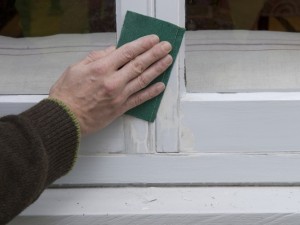 |
1. Most wood simply requires sanding and cleaning down with sugar soap before paint is applied. |
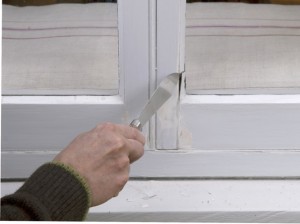 |
2. In wooden windows remove any loose putty with a scraper or putty knife and dust out the rebates thoroughly. |
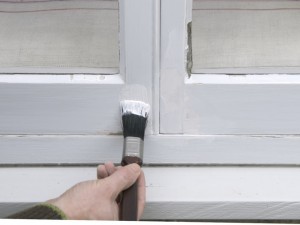 |
3. Any bare areas must be patch primed. Any new wood should be knotted and primed completely. |
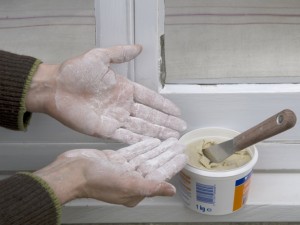 |
4. Putty needs to be worked in your hands before use. A layer of powder filler on your hands makes this easier. |
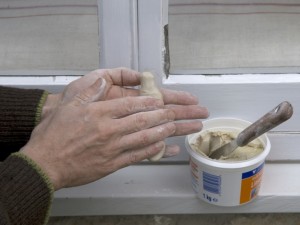 |
5. Roll the putty in your hands into small sausages, slightly larger than the size required to fill the gaps. keep working the putty until it contains no lumps. |
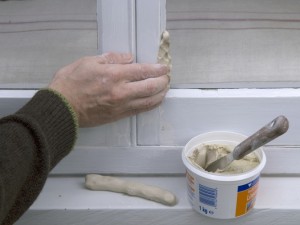 |
6. Press the putty lightly into place with your fingers, ensuring good contact between the wooden edge of the rebate and the glass. |
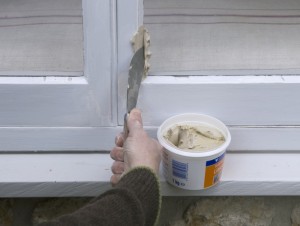 |
7. Use a putty knife to smooth along the putty surface and create a neat finish. One or two passes of the knife may be required. Allow the putty to dry for a few days before priming. |
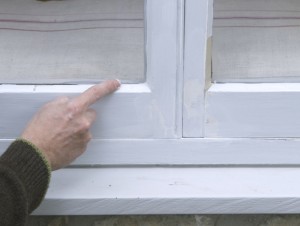 |
8. Small cracks in old putty can be filled with some exterior all-purpose filler. |
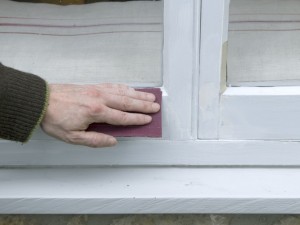 |
9. Once the filler is dry, sand the area until smooth, taking care not to scratch the glass surface with the sandpaper. |
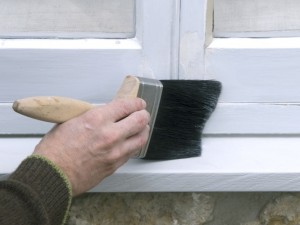 |
10. After a final dust off to ensure the cleanest surface for painting, preparation is complete. You are now ready to apply your chosen exterior paint system. |
Exterior wood painting
- If you choose to use a gloss system, ideally paint two undercoats on the woodwork before the gloss topcoat is applied. The alternative is to use a mid-sheen finish (such as eggshell) – in this case, rather than using undercoat, you just apply two to three coats of the finish.
- Always be guided by the paint manufacturer on the quantity you require, but bear in mind that 2.5 litres will go a long, long way if you are just painting windows.
- Any areas of rot must be treated or replaced before painting. Small areas of rot can be cut out with a scraper, and allowed to dry before applying a wood hardener. The hole may then be filled with a two-part, epoxy-based filler that will dry to an extremely hard finish, which, once sanded, may then be painted.
- If you’re recoating  previously varnished, stained or oiled  wood, sanding with a palm sander is a good way of removing the old finishes before a new one is applied. Most varnishes and stains are 2-3 coat systems. Oils may require more coats and will certainly need a further maintenance coat at least once a year in order to retain the wood colour.
- For information on outside walls, please see my guide ‘Painting exterior walls’.
